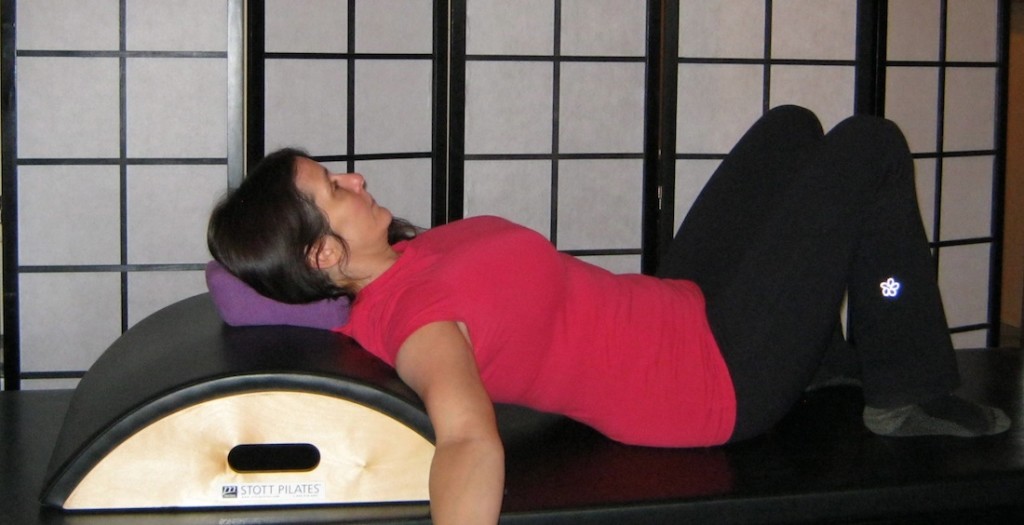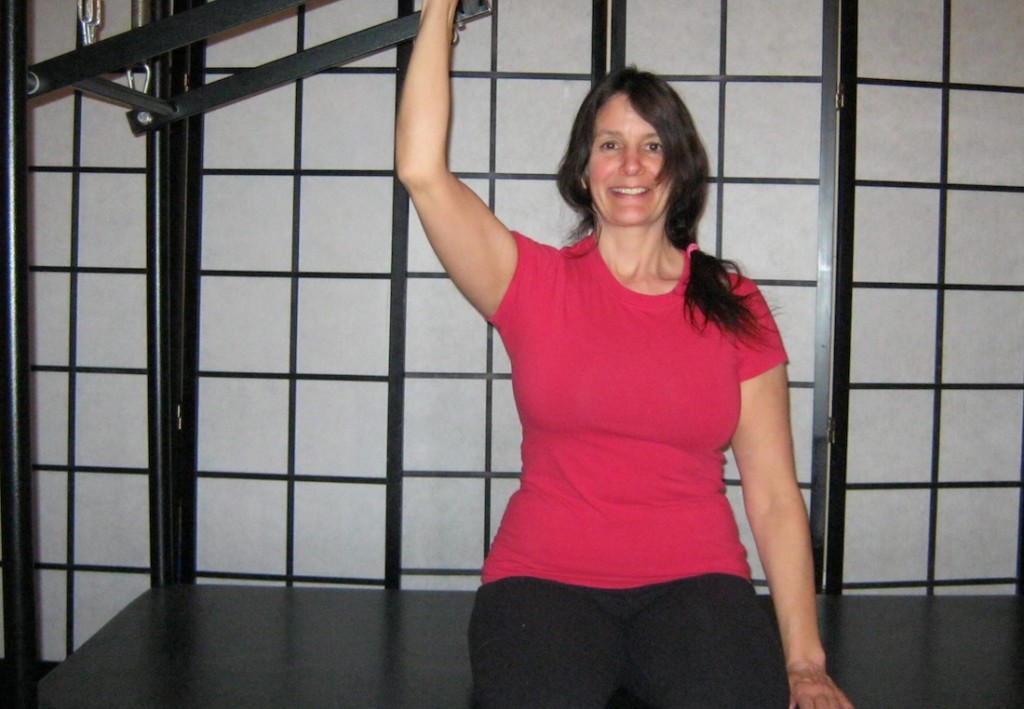Exercise for Breast Cancer Survivors
There are several different stages of breast cancer and each requires a different course of care. This article will highlight a few key things to keep in mind when working with someone who has survived breast cancer and offer some exercise options.
One of the main concerns surrounding breast cancer and exercise is to prevent the onset of, lessen or not make worse the presence of lymphedema.
Lymphedema
Fluid retention and tissue swelling caused by a compromised lymphatic system characterize Lymphedema. This commonly happens when lymph nodes are removed during breast cancer surgery. The client may report a feeling of fullness or heaviness, achiness and/or pain in the affected area. There will be swelling down the arm on the affected side. Exercise helps by using the muscles to help move the lymph. The most important things to remember are to work very gradually with someone, always warm the body up and cool the body down and suggest that the compression sleeve be worn during exercise.
When not to exercise
Do not perform exercise if the client is experiencing an acute lymphedema attack
Exercise Guidelines
Warm up
Walking 5-10 minutes, having a shower or gentle stretching are all suitable ways to
Warm the body up prior to exercise.
Progress gradually
Always ensure any increase in intensity, endurance or time spent exercising is done at a very gradual pace. This helps protect against either the onset of or a flare up of lymphedema.
Cool down
Gradually lowering the body’s temperature after exercise will help protect against
either the onset of or a flare up of lymphedema.
***Although the choice is the client’s, it is best to suggest they wear their compression sleeve during exercise to help any lymphedema that is present from increasing***
When you first begin working with a client who is a breast cancer survivor, they may present with many signs and symptoms:
- Pain
- Weakness/Fatigue
- Loss of strength
- Loss of normal glenohumeral mobility
- Decreased core stability
- Decreased function
Pilates is a great environment for rehabilitation. It offers many different approaches in helping to facilitate movement, increase proprioception, and lengthen and strengthen muscles which is what the breast cancer survivor needs for their body.
A client may have very different challenges depending on:
- Whether or not they had lymph nodes removed … you have to be careful if they have had lymph nodes removed due to the increased chance of having lymphedema
- The presence of lymphedema … if your client present with non-acute lymphedema
They are safe to exercise but limit gripping exercises that may aggravate the system - Whether or not they had/are having radiation … if they have had radiation, then treat them as though they are at risk for developing lymphedema
- Whether or not they had/are having chemotherapy … this may increase their fatigue, put them into menopause, increase their risk for osteoporosis.
- If they had a partial mastectomy … staying aware of the asymmetries due to the surgery being performed on one side
- If they had a total mastectomy … stiffness and lack of motion across both sides
- If they had a modified radical mastectomy … fascia has been removed and since fascia helps hold muscles in place, there may be less stability around the site
- If they had a radical mastectomy … fascia and the pec major and minor muscles have been removed. This may result in obvious muscle weakness and postural weakness and deformity
Whether or not they have had breast reconstruction:
- TRAM Flap (Transverse Rectus Abdominus Myocutaneous Flap)…Client will not be able to flex forward as easily/ symmetrically
Use the spine supporter to help place the client in flexion - Latissimus Dorsi Myocutaneous Flap … Client may experience more difficulty with shoulder range of motion as it stretches across the suture site. Strength and scapulae stability will also be affected. Focus needs to be on the serratus and pec muscles
- Gluteal Free Flap … The gluteal muscles will not work as effectively and the hamstrings will have to pick up the work. Even stability around the SIJ can be affected.
- Whether or not they are having inplants … If the client is in the process of having implants, there are times throughout the process where saline is injected into the implant. During this time the client may feel some discomfort so performing gentle exercise is best
Radiation
A client may continue to exercise if she/he chooses to, but their level of fatigue will likely be higher, so adjust their exercise accordingly. If the client has had radiation, treat them as though they are at risk for developing lymphedema.
Axillary Web Syndrome (AWS)
This can happen in response to having lymph nodes removed. Knotted up bands of tissue can be seen extending from the axilla, along the medial aspect of the arm, often across the front of the elbow and sometimes as far as the base of the thumb. There will be a feeling of tightness in the axilla and sometimes across the chest wall. Full shoulder abduction and elbow extension may be difficult to achieve. The person may appear slightly stooped forward on that side due to the strong pull of tight structures on the front of the body. As well as finding a physiotherapist who treats “cording”, continue to see your client for range of motion exercise so frozen shoulder does not set in. Work through shoulder and elbow movements using the push through bar.
Pilates warm up exercises
Focus on ensuring that your client is increasing their neck and shoulder range of motion gradually
Make sure that they can both move and stabilise their scapulae
Breathing: work through chest, lateral and abdominal breathing
Resting Posture: Lay over the arc barrel to open up the chest. Use pillows beneath the head or under the backs of the arms as needed. Moving your client up the arc barrel will position their chest closer to the apex and will increase the stretch. Arms can be alongside the body or out to the sides.



A Few Options for Exercises
- Lat pull – unilateral with push through bar
- Scapular Isolation: work on the mat or arc barrel, in sitting using the push through bar, supine using the roll down bar
- Push through on back
- Side arm pull
- Mermaid: using roll down spring
- Modified port de bras, using push through bar




Remember, you can always get a stretch through the abdominal area as well, using the lower body. When able to, have your client come up into a hip roll position from the mat or chair. This will help lengthen through the front of the body.

Begin working with your client, erring on the gentler side using only their own body weight for range of motion, stretching and strengthening exercises and progress slowly as there is plenty of time to increase the challenge for them.
